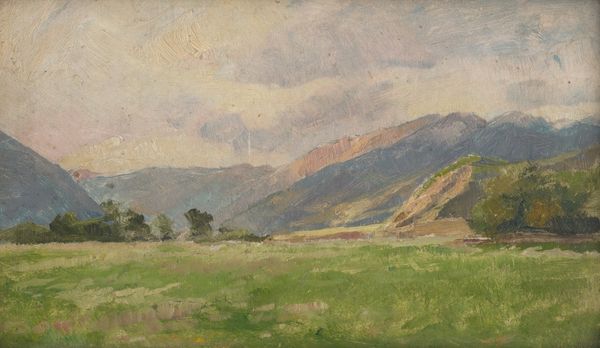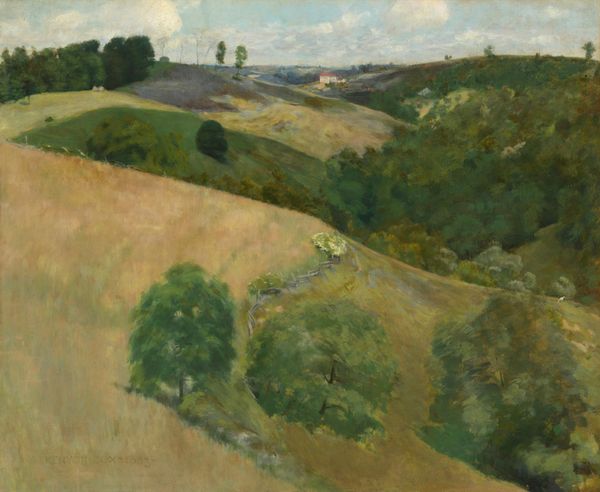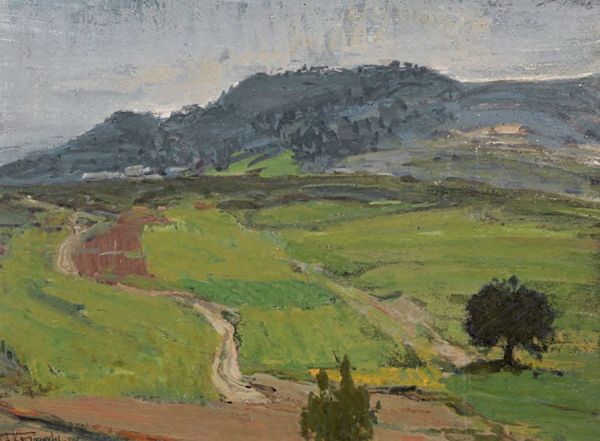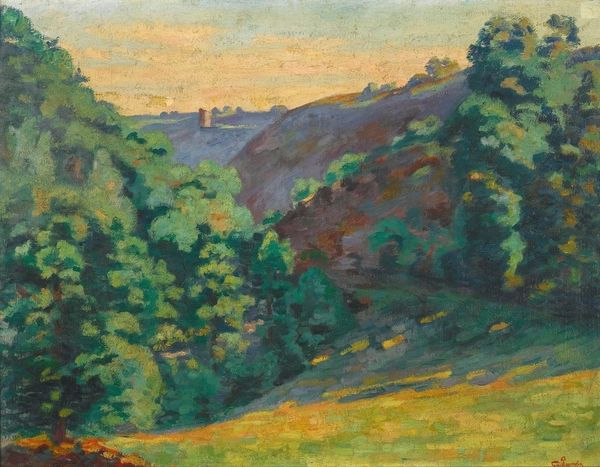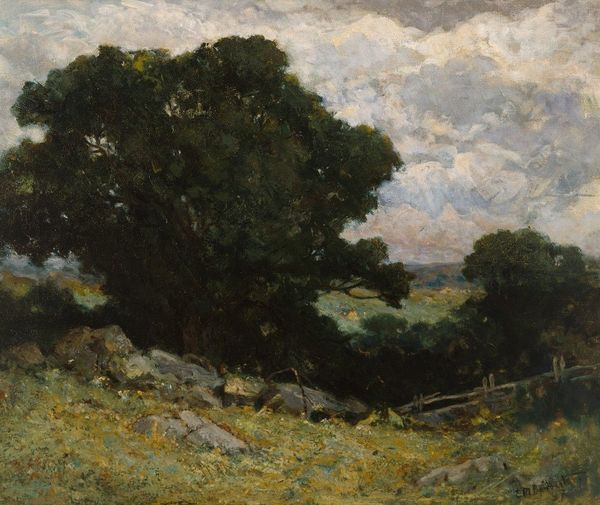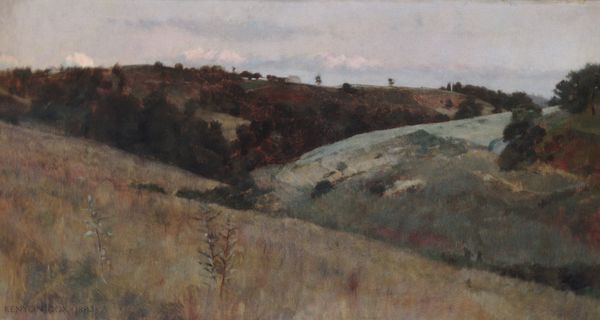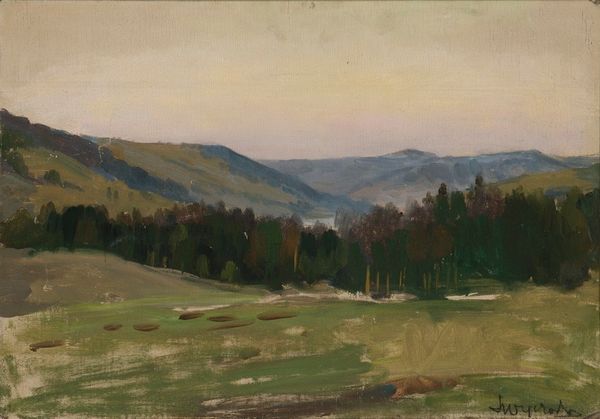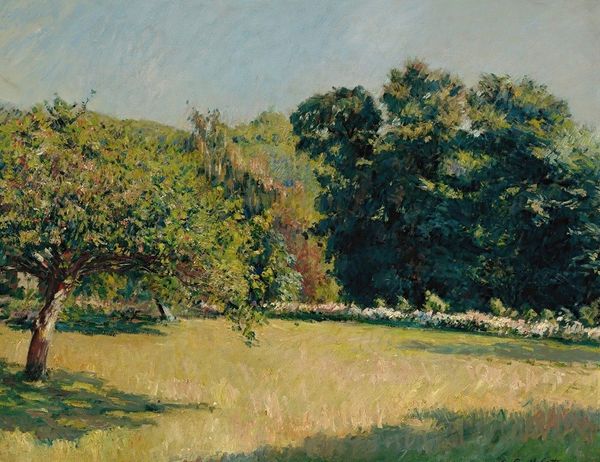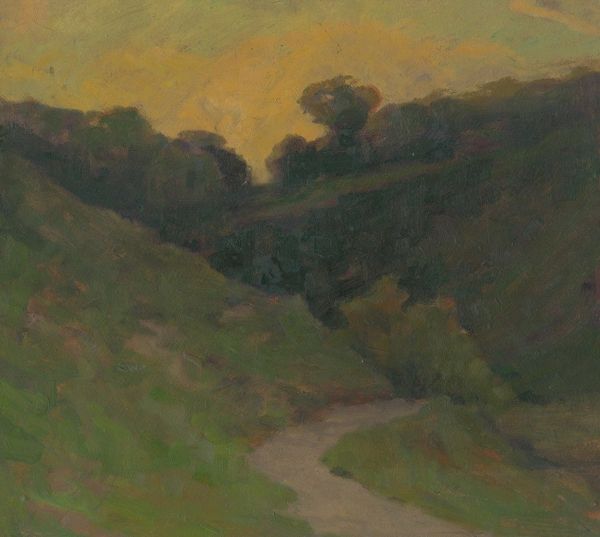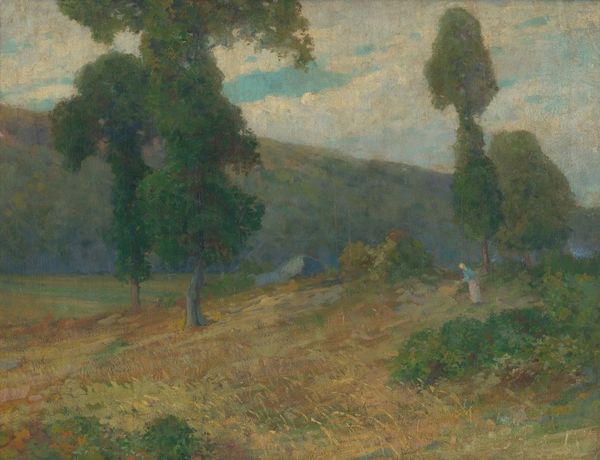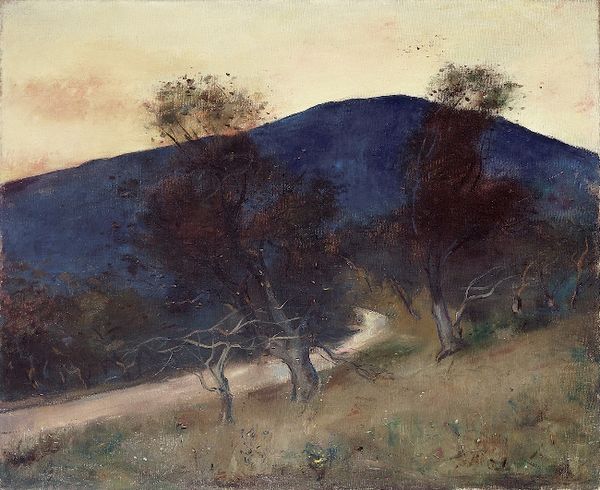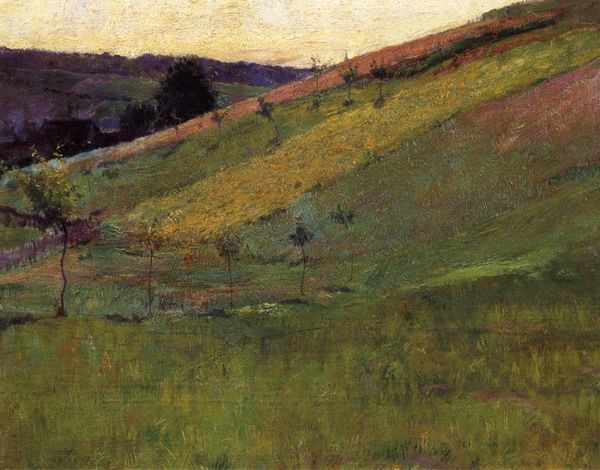
Copyright: Public Domain: Artvee
Curator: Let's consider this work by Ľudovít Čordák titled "The Hornád Valley by Ťahanovce," painted between 1914 and 1915. Editor: Immediately, I’m struck by its quietude. A muted palette of greens and blues creates a sense of serene distance, despite the density of the foliage. Curator: Indeed. The impressionistic application of oil paint speaks to the plein-air tradition, capturing the transient effects of light and atmosphere upon the landscape. Editor: Precisely. But how does this depiction of nature reflect the socio-political context of its time? Remember, Europe was on the brink of, and then embroiled in, the First World War. Curator: That's a pertinent point. Yet, notice the brushwork; the composition employs loose, gestural strokes that build depth and dimension through color and texture alone. The lack of sharp definition lends the valley a dreamlike quality, almost divorced from reality. Editor: But can we ignore reality so easily? This romanticized view could represent an escape from the anxieties of the looming conflict, or perhaps a yearning for a simpler, pre-war world. Landscape painting has always served as a projection of cultural values and desires. The valley could have strategic importance, local farming community value or a number of things for local politics at the time. Curator: A compelling perspective. I tend to focus on the internal elements, like the balance of cool and warm tones or the way the artist manipulates our perception of space with subtle color variations. Observe how the receding mountains, rendered in progressively lighter shades of blue, create atmospheric perspective. Editor: I concede to the skill on display, but understanding the era in which the artist made the artwork, shapes the appreciation of what the artwork itself signifies and means to society at large. Its potential role in constructing a collective identity in a rapidly changing world cannot be disregarded. Curator: Perhaps it's the synthesis of both approaches – a focus on the intrinsic formal elements while grounding the artwork within a broad, and dynamic historical landscape – that allows us to discover a richer experience with the artwork. Editor: A constructive way of looking at "The Hornád Valley", bridging the aesthetics of form with a profound comprehension of its temporal anchoring. Thank you.
Comments
No comments
Be the first to comment and join the conversation on the ultimate creative platform.

